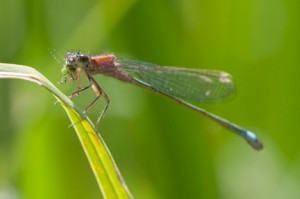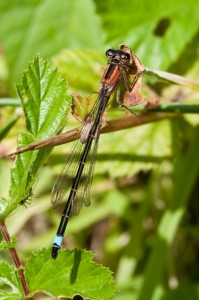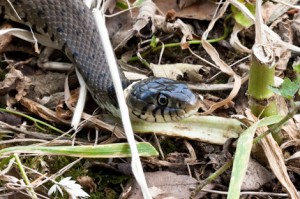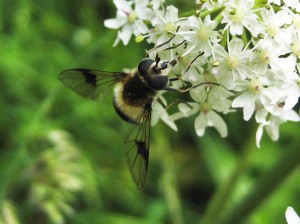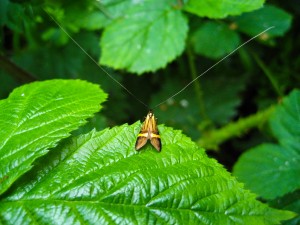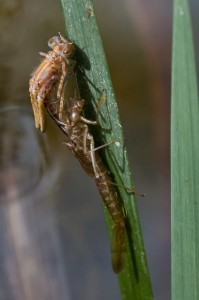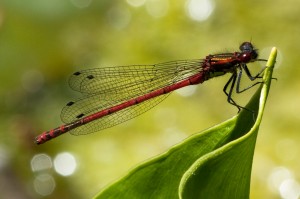This is just a quick update on the produce in my garden. Following on from last year’s disaster, I have already had some minor success.
After living in a pot for a couple of years whilst we relandscaped the back garden, the blackcurrant bush has grown well, survived aphid attacks and has yielded about 1 lb of blackcurrants. We are going to freeze some of them and others will no doubt end up in blackcurrant muffins (I will post a recipe at a later date if any of you are interested). The variety that we grow, for no reason other than it looked healthy when we bought it over 5 years ago from the garden centre, is Ben Sarek. I have included a picture to prove they exist (and in case we don’t get any next year).
The gooseberry has been attacked by sawfly for two years, so we are giving it one final chance this year and have relocated it to the front of the house. It has one solitary gooseberry, but, so far no sawfly devastation. Hopefully it will continue that way.
The garlic that I planted in December is having mixed fortunes. Those planted in the front garden are doing wonderfully well and have some of the thickest stems I have seen, the 3 cloves that I put in the back are looking a bit sad and weedy. I think it will be time to harvest them before long.
My courgettes are also doing OK (although the ones I gave to my mother-in-law appear to be twice the size) and the first flowers appeared on Thursday on both the one in the ground and the one in a pot. This is a big relief as they failed completely last year, being annihilated by slugs soon after planting. This variety is Partenon which I have grown before, fruits early and is self fertile so should be fine whatever the weather.
I have also planted out some pak choi and my beans as well as some either cauliflowers or cabbage that I was given (Colin couldn’t remember which was which). Radish (which are supposed to be easy to grow) have benefited from me making the effort to thin them out and I finally have some carrots coming up in containers. However, I am particularly pleased with some rainbow chard in the front garden and my chillis in the back garden which are already fruiting. (I will share the secret of my success once they have ripened.)


